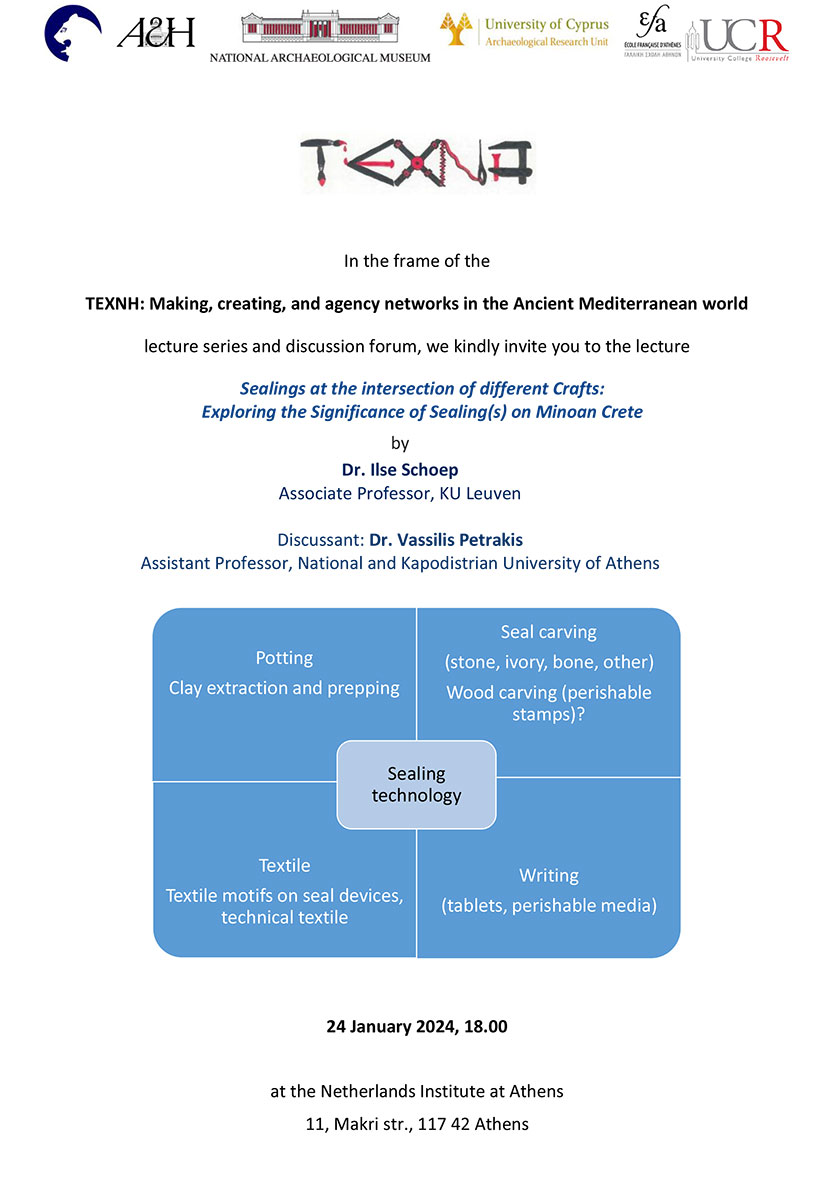The Netherlands Institute at Athens, in collaboration with the Royal Museums of Art and History Brussels, The National Archaeological Museum Athens, The Archaeological Research Unit of the University of Cyprus, The École française d’Athènes and The University College Roosevelt (NL) announce their next event in their Lecture series and Discussion Forum TEXNH: Making, creating, and agency networks in the Ancient Mediterranean world.
The lecture ‘Sealings at the intersection of different Crafts: Exploring the Significance of Sealing(s) on Minoan Crete’ will be given by Dr. Ilse Schoep, Associate Professor, KU Leuven.
Discussant: Dr. Vassilis Petrakis, Assistant Professor, National and Kapodistrian University of Athens.
Abstract
In comparison to stone vases, gold jewelry and fine decorated pottery, sealings are but humble artefacts: tiny in size, made of a cheap, ‘down-to-earth’ material, and not very durable even when fired. From a materiality perspective, however, they form a unique combination of picture, artefact and (regularly) writing. This explains why for most of the 20th century Minoan sealings (also called nodules) formed the object of study different research traditions: an arthistorical one focusing on their style and motif, an archaeological one focusing on their role as administrative documents and an epigraphic one, because of the regular occurrence of script signs. Although recent studies have gone a long way towards overcoming a deep-rooted separation of material, image and word in Aegean Bronze Age archaeology, sealings are still primarily viewed as administrative tools that were used by a central authority to monitor an economic territory. They are usually cast in an auxiliary role to the (more) literate written documents, such as tablets and perishable documents. Such interpretation, however, is reductive because it does not take into account the unique materiality of sealings, which places them at the intersection between different technologies (potting, carving, textile working and writing). The aim of my talk is to explore the significance of sealings in Minoan society not just from an administrative perspective but from this perspective of intersection by making use of
archaeological, technological, cognitive and ethnographic data. Since sealings can do things that neither seal devices nor tablets can do, I will propose that their function goes well way beyond acting as auxiliary documents to a (more) literate tablet administration.
The event will also be streamed live. For registration please visit:
https://us06web.zoom.us/meeting/register/tZMsc-GprTgrHtx-hvH03ZI8QaU1P0TJqUln
